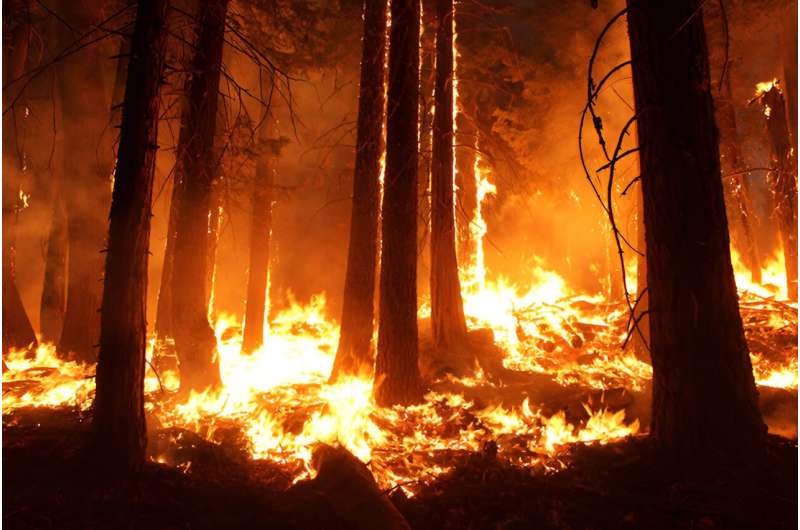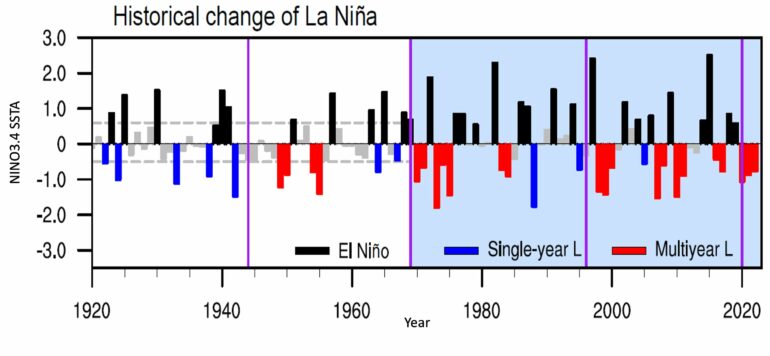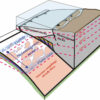Multiyear La Niña events have become more common over the last 100 years, according to a new study led by University of Hawai’i (UH) at Mānoa atmospheric scientist Bin Wang. Five out of six La Niña events since 1998 have lasted more than one year, including an unprecedented triple-year event. The study was published in Nature Climate Change.
“The clustering of multiyear La Niña events is phenomenal given that only ten such events have occurred since 1920,” said Wang, emeritus professor of atmospheric sciences in the UH Mānoa School of Ocean and Earth Science and Technology.
El Niño and La Niña, the warm and cool phases of a recurring climate pattern across the tropical Pacific, affect weather and ocean conditions, which can, in turn, influence the marine environment and fishing industry in Hawai’i and throughout the Pacific Ocean. Long-lasting La Niñas could cause persistent climate extremes and devastating weather events, affecting community resilience, tourist industry and agriculture.
Determining why so many multiyear La Niña events have emerged recently and whether they will become more common has sparked worldwide discussion among climate scientists, yet answers remain elusive.
Wang and co-authors examined 20 La Niña events from 1920-2022 to investigate the fundamental reasons behind the historic change of the multiyear La Niña. Some long-lasting La Niñas occurred after a super El Niño, which the researchers expected due to the massive discharge of heat from the upper-ocean following an El Niño. However, three recent multiyear La Niña episodes (2007–08, 2010–11, and 2020–22) did not follow this pattern.

Rim fire near Yosemite National Park, California. © Mike McMillan / USFS
They discovered these events are fueled by warming in the western Pacific Ocean and steep gradients in sea surface temperature from the western to central Pacific.
“Warming in the western Pacific triggers the rapid onset and persistence of these events,” said Wang. “Additionally, our study revealed that multiyear La Niña are distinguished from single-year La Niña by a conspicuous onset rate, which foretells its accumulative intensity and climate impacts.”
Results from complex computer simulations of climate support the observed link between multiyear La Niña events and western Pacific warming.
The new findings shed light on the factors conducive to escalating extreme La Niña in a future warming world. More multiyear La Niña events will exacerbate adverse impacts on communities around the globe, if the western Pacific continues to warm relative to the central Pacific.
“Our perception moves beyond the current notion that links extreme El Niño and La Niña to the eastern Pacific warming and attributes the increasing extreme El Niño and La Niña to different sources,” Wang added.
“The knowledge gained from our study offers emergent constraints to reduce the uncertainties in projecting future changes of extreme La Niña, which may help us better prepare for what lies ahead.”
More information:
Bin Wang et al, Understanding the recent increase in multiyear La Niñas, Nature Climate Change (2023). DOI: 10.1038/s41558-023-01801-6
Provided by
University of Hawaii at Manoa
Citation:
Long-lasting La Niña events more common over past century (2023, September 21)



